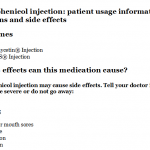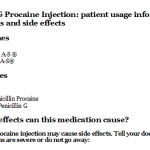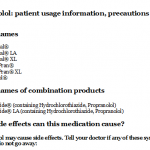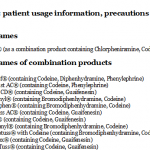
Fluad (Influenza Vaccine, Adjuvanted): patient information, prescribing information, ingredients, manufacturer, adverse reactions and side effects
Sunday, April 09, 2017 by Gregory Van Dyke
http://www.naturalnewsreference.com/2017-04-09-fluad-influenza-vaccine-adjuvanted-patient-information-prescribing-information-ingredients-manufacturer-adverse-reactions-and-side-effects.html
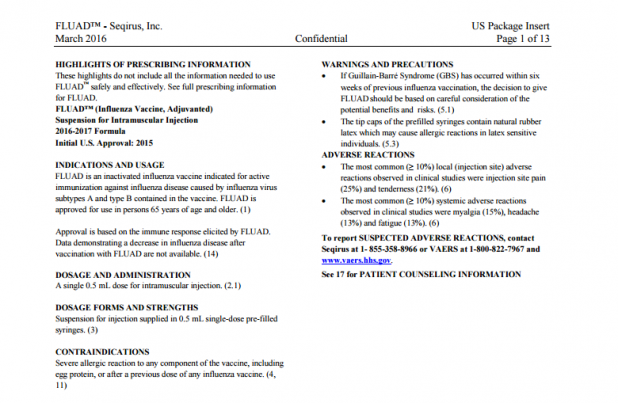
HIGHLIGHTS OF PRESCRIBING INFORMATION
These highlights do not include all the information needed to use FLUAD™ safely and effectively. See full prescribing information for FLUAD.
See full insert sheet at this link at the Natural News Reference website.
FLUAD™ (Influenza Vaccine, Adjuvanted)
Suspension for Intramuscular Injection 2016-2017 Formula
Initial U.S. Approval: 2015
INGREDIENTS AND EXCIPIENTS
FLUAD (Influenza Vaccine, Adjuvanted), a sterile suspension for intramuscular injection, is a trivalent, inactivated influenza vaccine prepared from virus propagated in the allantoic cavity of embryonated hens’ eggs inoculated with a specific type of influenza virus suspension.
Each 0.5 mL dose contains at least 15 mcg of hemagglutinin (HA) from each of the following three influenza strains recommended for the 2016/2017influenza season: A/California/7/2009, NYMC X-181 (H1N1) (an A/California/7/2009 pdm09-like virus); A/Hong Kong/4801/2014, NYMC X-263B (H3N2) (an A/Hong Kong/4801/2014-like virus); and B/Brisbane/60/2008, wild type (a B/Brisbane/60/2008-like virus). FLUAD also contains MF59C.1 adjuvant (MF59®), a squalene based oil-in-water emulsion. Each of the strains is harvested and clarified separately by centrifugation and filtration prior to inactivation with formaldehyde. The inactivated virus is concentrated and purified by zonal centrifugation. The surface antigens, hemagglutinin and neuraminidase, are obtained from the influenza virus particle by further centrifugation in the presence of cetyltrimethylammonium bromide (CTAB). The antigen preparation is further purified.
FLUAD is prepared by combining the three virus antigens with the MF59C.1 adjuvant. After combining, FLUAD is a sterile, milky-white suspension supplied in 0.5 mL single-dose prefilled syringe. Each 0.5 mL dose contains 15 mcg of hemagglutinin (HA) from each of the three recommended influenza strains and MF59C.1 adjuvant (9.75 mg squalene, 1.175 mg of polysorbate 80, 1.175 mg of sorbitan trioleate, 0.66 mg of sodium citrate dihydrate and 0.04 mg of citric acid monohydrate) at pH 6.9-7.7
FLUAD may contain trace amounts of neomycin (≤ 0.02 mcg by calculation), kanamycin (≤ 0.03 mcg by calculation) and barium (˂ 0.5 mcg by calculation), which are used during the initial stages of manufacture, as well as residual egg proteins (˂ 0.4 mcg), formaldehyde (≤ 10 mcg), or CTAB (≤ 12 mcg).
FLUAD does not contain a preservative.
The tip caps of the prefilled syringes contain natural rubber latex. The syringe and syringe plunger stopper are not made with natural rubber latex.
INDICATIONS AND USAGE
FLUAD is an inactivated influenza vaccine indicated for active immunization against influenza disease caused by influenza virus subtypes A and type B contained in the vaccine. FLUAD is approved for use in persons 65 years of age and older. (1)
Approval is based on the immune response elicited by FLUAD. Data demonstrating a decrease in influenza disease after vaccination with FLUAD are not available. (14)
DOSAGE AND ADMINISTRATION
A single 0.5 mL dose for intramuscular injection. (2.1)
DOSAGE FORMS AND STRENGTHS
Suspension for injection supplied in 0.5 mL single-dose pre-filled syringes. (3)
CONTRAINDICATIONS
Severe allergic reaction to any component of the vaccine, including egg protein, or after a previous dose of any influenza vaccine. (4, 11)
WARNINGS AND PRECAUTIONS
If Guillain-Barré Syndrome (GBS) has occurred within six weeks of previous influenza vaccination, the decision to give FLUAD should be based on careful consideration of the potential benefits and risks. (5.1)
The tip caps of the prefilled syringes contain natural rubber latex which may cause allergic reactions in latex sensitive individuals. (5.3)
ADVERSE REACTIONS
The most common (≥ 10%) local (injection site) adverse reactions observed in clinical studies were injection site pain (25%) and tenderness (21%). (6)
The most common (≥ 10%) systemic adverse reactions observed in clinical studies were myalgia (15%), headache (13%) and fatigue (13%). (6)
To report SUSPECTED ADVERSE REACTIONS, contact Seqirus at 1- 855-358-8966 or VAERS at 1-800-822-7967 and www.vaers.hhs.gov.
USE IN SPECIFIC POPULATIONS
Pregnancy
Pregnancy Category B: A reproductive and developmental toxicity study has been performed in rabbits with a dose level that was approximately 15 times the human dose based on body weight. The study revealed no evidence of impaired female fertility or harm to the fetus due to FLUAD. There are, however, no adequate and well-controlled studies in pregnant women. Because animal reproduction studies are not always predictive of human response, this vaccine should be used during pregnancy only if clearly needed.
In a reproductive and developmental toxicity study, the effect of FLUAD on embryo-fetal and post-natal development was evaluated in pregnant rabbits. Animals were administered FLUAD by intramuscular injection twice prior to gestation, during the period of organogenesis (gestation day 7) and later in pregnancy (gestation day 20), 0.5 mL (45 mcg)/rabbit/occasion (approximately 15-fold excess relative to the adult human dose based on body weight). No adverse effects on mating, female fertility, pregnancy, embryo-fetal development, or post-natal development were observed. There were no vaccine-related fetal malformations or other evidence of teratogenesis.
Pediatric Use
The safety and effectiveness of FLUAD in the pediatric population have not been established.
Geriatric Use
Safety and immunogenicity of FLUAD have been evaluated in adults 65 years of age and older. [See Adverse Reactions (6.1) and Clinical Studies (14)]
Revised:
https://www.fda.gov/downloads/BiologicsBloodVaccines/SafetyAvailability/VaccineSafety/UCM474387.pdf
http://naturalnewsreference.com/vaccine-insert-sheets/Fluad-Influenza-Vaccine-Adjuvanted.pdf
Tagged Under: Tags: dosage, FLUAD, ingredients, insert sheet, side effects, usage, warnings

